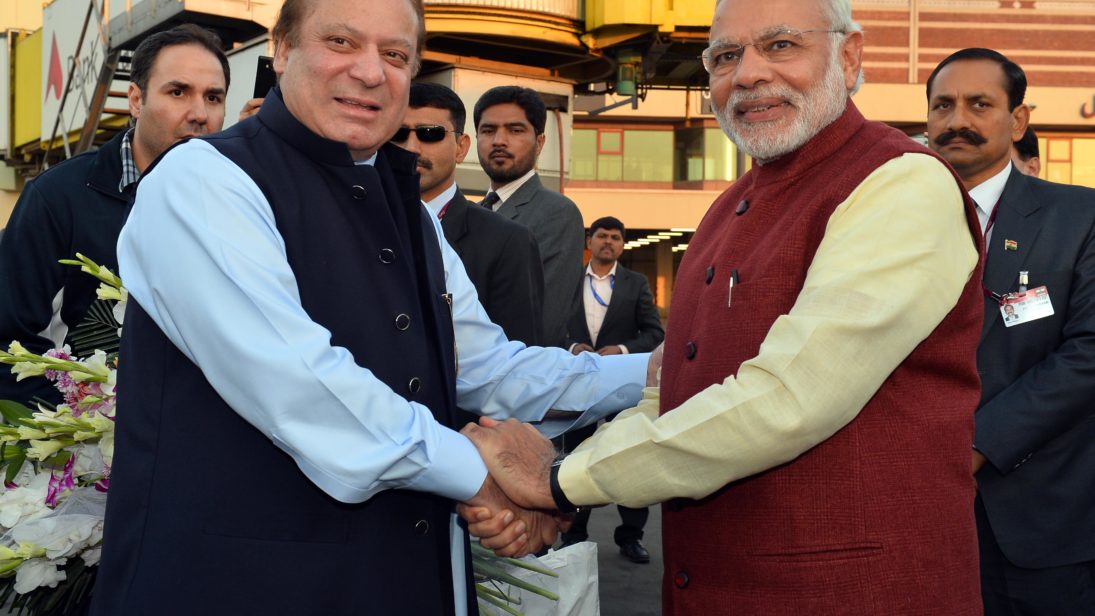
In his 2009 Forbes Magazine article titled “Five Reasons Why India Can’t Do A Gaza on Pakistan”, Tunku Varadarajan notes, “India does not because it cannot.” The article sought to answer the queries of the author’s numerous American and Indian friends who wanted to know why Pakistan was not being taught a lesson the same way Israel was teaching Palestine one. Forbes Media claims to be a media brand documenting business, technology and politics for affluent business leaders since 1917. It is beyond comprehension why the magazine’s presumably informed readership would pose such a question in the first place. Call me naïve but from where I look at it, the only things common between Israel-Palestine and India-Pakistan are the I’s and the P’s! Thankfully, the author goes on to explain the five reasons why India refrains from pulling a “Gaza” on Pakistan.
According to Varadarajan what distinguishes the South Asian equation from that in the Middle East is Pakistan’s possession of nuclear weapons. In his words, “an assault on Pakistani territory carries with it an apocalyptic risk for India.” Secondly India lacks the justification for pulling “a Gaza” on Pakistan because “terrorist attacks on India, while originating in Pakistan, are not authored by the Pakistani government.” Thirdly, unlike its Israeli counterpart, the Indian Lobby in the United States has yet to “evoke the kind of favor in American public opinion” that would allow India to use force against Pakistan. Fourth, Pakistan was strategically important for the United States. This gave Washington “a major incentive to rein in any Indian impulse to strike at Pakistan.” According to Varadarajan’s assessment India magnanimously bestowed Washington with the “gift of patience” vis-à-vis Pakistan. Lastly India remains a prisoner of its global aspirations, thus preventing it from doing the proverbial “Gaza” on Pakistan.
Varadrajan’s article clearly illustrates how Pakistan’s nuclear weapons are indeed a “trump card” for the country. Notwithstanding Pakistan’s compulsions, Western discourse on the subject remains critical of its efforts to enhance its nuclear capability. In doing so, it is often forgotten that regional developments including India’s conventional military superiority and the enunciation of its “Cold Start” doctrine strengthened Pakistan’s insecurities about Indian intentions. The US-India Nuclear deal and India’s efforts to acquire missile defence capability served as catalysts to reinforce Pakistan’s resolve to increase its stockpiles of fissile material.
On the issue of terrorist attacks on India and Pakistan’s alleged involvement, after initially threatening to do so, India eventually ruled out direct confrontation with Pakistan. Arguably Pakistan’s nuclear weapons served as its security guarantors once again. According to an anonymous Indian official thus:
“…the cost of any kind of surgical strike cannot be bigger than the damage we intend to inflict on the enemy…When you go to war you should be 100 per cent sure of victory. If something unexpected happens then people will not forgive you. If things go out of hand the same critics (who are asking for surgical strikes against Pakistan) would ask why you went in for the strikes.”
Varadarajan’s third and fourth arguments refer to the importance of the United States in the South Asian equation and how the relationship has been beneficial for Pakistan. A closer look at facts reveals otherwise. The Kargil Conflict saw the US pressurizing Pakistan to withdraw its troops from their positions across the LoC. Reminiscent of 1971, the US was beginning to have doubts about its support for Pakistan even as India’s economic importance for the US had grown substantially. During the 2001/2002 standoff India refused to pay heed to diplomatic pressure from the US to engage in talks with Pakistan, yielding only after intense international pressure. In 2008, although the US once again “needed Rawalpindi to keep its troops positioned on the frontier with Afghanistan… the plan was first to show support for India.”
On the issue of India’s global aspirations also there remains a flipside to the argument. Contrary to the author’s argument centered on Indian restraint, a Stimson Centre Report on the Mumbai Attacks predicts otherwise. Were India to make “considerable progress towards implementing its cold start doctrine more kinetic options would become available to Delhi” in the event of a future terror attack with possible links to Pakistan. Quoting a US official the report states, “India’s confidence in their military capabilities is rising. The (presumed shortcomings of the Indian) air force has been a dampener, but it is getting new planes.” Notwithstanding the importance of the United States as a third party mediator, “new military capabilities could prompt India to review its choices if and when the next time crisis with Pakistan occurs. At a minimum, US officials will need to consider that “the time available for diplomacy may be shorter” in the event of another major Pakistan-linked terror attack on Indian equities.” Given that Pakistan’s deterrence posture remains India centric, it is not surprising that New Delhi’s nuclear posturing and military build-up have prompted Pakistan to make similar adjustments to its own nuclear posture. The country’s determination to increase its operational capability has translated into even greater efforts to acquire more fissile material.
***